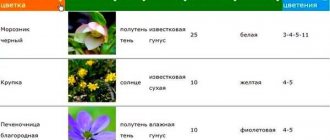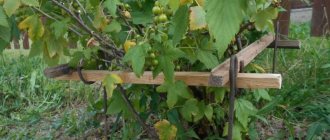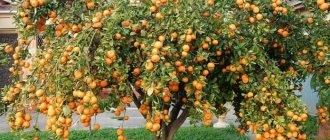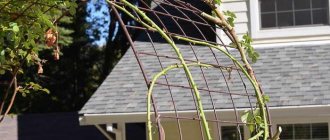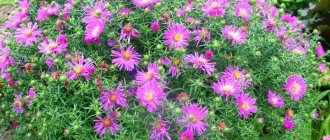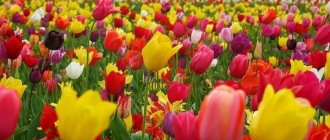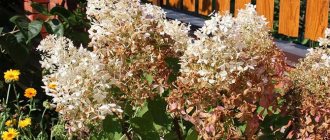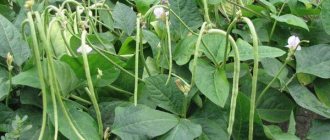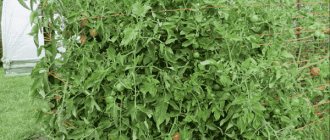Flower beds and flower beds are the highlight of the site
Any owner of a plot of land, regardless of the size of his plot - a standard 6 acres in a country house or a hectare of forest, dreams of turning it into his personal Eden. Even if you purchased a dacha solely to grow vegetables on it, all the same, in addition to the beds, there will definitely be a small but blooming island on the site, pleasing to the eye. A constantly blooming flower bed is the dream of any gardener.
And if your goal is to achieve continuous decorativeness in your garden, you will have to make some efforts to make it look truly beautiful. And flower beds play an important role in this.
Flower beds are the most important component of landscape design: thanks to them you give your garden a certain style. Considering the huge variety of design options for suburban areas, this is not so difficult. However, there are certain rules that must be followed if you do not want to have random flower plantings, but bright, beautiful flower beds that will delight you with continuous flowering all season long.
Ready-made flower bed schemes for beginners
For those new to gardening, it is best to start with simple flower beds to ensure joyful results. Flowerbeds, paintings or rock gardens should be entrusted to professionals. Island compositions of simple shapes, borders and mixborders are considered simple. Developments that have been successfully implemented by thousands of beginning gardeners are presented below.
Read more Beautiful and unpretentious perennials from seeds for the garden with photos
Corner flower bed
With the help of this blooming arrangement you can successfully decorate an unsightly corner of the garden. Its diameter is 2 meters. Predominant tones: crimson and silver. 1 - red daylily, 2 - wormwood, 3 - 6 dark red Macedonian bark, 4 - burgundy heuchera, 5 - chickweed.
The corner flower bed successfully combines red and gray shades
Sunny flower garden
If a rectangular area “walks” in the garden in the open sun, it can be decorated with a bright flower bed. This option should be installed near a wall or fence, as it is one-sided. The photo shows what colors of crops need to be selected for this flower bed of continuous flowering perennials. 1 - stock roses, 2 - decorative sunflower, 3 - Icelandic poppy, 4 - rudbeckia, 5 - cardinal lobelia, 6 - catnip, 7 - Posharsky bellflower, 8 - catananche, 9 - gravilat, 10 - sedum, 11 - Heuchera.
This flower garden contains perennial flowers of increasing height, so it is placed near a wall or fence
Mixed flower bed
A flowerbed that combines perennials and annuals can also bloom continuously. The presented option is one of the simplest and most effective:
- Heliotrope tree.
- Tobacco Sander.
- Terry marigolds.
- New Guinea balsam.
A flowerbed created according to this scheme will win the hearts of lovers of bright colors.
Three-color flowerbed
The main accent of this composition is blue dahlias. Many gardeners like them, which has made this simple flower bed very popular. Particularly impressive is its unusual multi-tiered design and color combination:
- Dahlia.
- Delphinium.
- Monarda.
- Common Dubrovnik.
In this three-color flower bed, flower growers managed to perfectly match dahlias
Flowerbed-island
This composition consists of 13 perennials with different flowering periods, which perfectly complement each other. Although it is usually not recommended to place so many plants in such a small area, in this case they are selected in such a way that a feeling of complete harmony is created. For beginners, this is an opportunity to feel like professionals. The diagram is shown in the photo.
By creating this flower bed, a novice gardener can feel like a professional landscape designer
Mixborder - an extended flower bed of irregular shape
One of the most common and relatively simple garden solutions is a mixborder (“mixed border”). It is understood as a rather long, elongated flower garden of irregular shape, which has free outlines and the same free layout.
Usually a mixborder is placed near some building - near a house, along a fence, outbuildings or gazebo. Another interesting option is to fence the lawn with it.
As a rule, the mixborder includes low-growing trees, flowering shrubs and ornamental perennial plants. The main distinguishing feature of the composition is continuous flowering.
The rules for planting flowers for such a flower garden are simple. For a mixborder, crops should be selected in such a way that some replace others, then it will be decorative all season. The main mistake beginners make is to plant plants that bloom at the same time (for example, peonies). In this case, magnificent caps of flowers will delight you until July, and the rest of the time the mixborder will be dominated exclusively by green color.
Of course, the situation can be saved by summer flowers, the same pansies or petunias, but still this is not quite what the creators of the compositions hope for. Therefore, you need to approach the choice of plants responsibly.
However, you should not go to the other extreme and plant too many different flowers in the hope of continuous flowering. Some amateurs manage to place more than ten plants in a small mixborder, and even plant several copies of each. As a result, flowers cannot develop normally because the roots require space and nutrients, and the leaves lack color.
When creating a mixborder, you need to pay attention to the following main points:
- the size of the area that you are willing to allocate for your “mixed border”;
- illumination of the area for it;
- wind-blown (not all plants like drafts);
- location;
- shaded area (like cold wind, many plants cannot tolerate shade);
- plant forms (shrubs, flowers, decorative foliage, herbs);
- site size.
The main thing that distinguishes planting plants in a mixborder from other flower beds is their “flowing” into each other, which implies smoothness. Therefore, a mixborder must necessarily contain so-called “skeletal plants”, around which the entire composition is built. As a result, you will have a constantly blooming garden.
The tallest plants with large unusual leaves are placed in the background of the flower garden. Next to them you can place tall flowers with straight stems (for example, cannas). In the central part, along the entire length of the mixborder, crops of medium height with small leaves are planted - for example, astilbe, which, by the way, bloom all summer and come in a wide variety of colors. And finally, in the foreground there are low ground cover plants or even summer gardens, which allow you to give the flower garden a new look every year.
Considering the variety of cultural forms, you can create a flower garden of any content. The most important thing to remember is that you need to stick to one style, otherwise the mixborder will lose half of its charm. Mixing plants that do not suit each other not only in terms of agricultural technology, but also simply in appearance, sometimes looks not just strange, but even tasteless. Creeping junipers do not coexist with cornflowers, and daisies are not planted next to noble park roses.
But a flower garden made in a rustic style with herbs, poppies, cornflowers and other suitable plants will look simply magical! As well as an English-style mixborder with beautifully decorated decorative shrubs and tea roses.
What is a continuous flowering bed?
For a decorative composition with continuous flowering, crops with different life cycles are selected. Planning is carried out in such a way that when some buds wither, others bloom. This cycle should not end from the beginning to the end of the warm season.
Deciduous and coniferous crops often act as partners for flowers in such flower beds. A variety of annuals can be additional elements. The attractiveness of the composition depends not only on the continuous flowering of its participants, but also on the correct filling of the space. If voids form in the flowerbed in the middle of the season, its decorative value is sharply reduced.
Advantages of a perennial flower garden with continuous buds:
- Perennial crops are easy to care for and do not deplete the soil.
- The composition pleases with continuous flowering from mid-spring until the first frost.
- The flowerbed does not need to be re-created every year.
- Perennials withstand the vagaries of weather well.
Important! Crops in one flowerbed should be well compatible in height.
Perennial plants for a composition with continuous flowering should be selected according to their life cycle, height and external compatibility
Flowerbed - classic flower garden
A classic flower garden in the form of a flower bed is created in the form of a regular geometric shape with a flat surface. There are flower beds that combine different types of plants, including those of different heights. Flowerbeds with one type of plant are no less common.
Flowerbeds, unlike mixborders, are visible from all sides, so they can be located either close to the house or deep in the garden.
At the same time, the size of flower beds can be very different, and if some large flower beds are created, a simple shape - a circle, oval, square, rhombus or rectangle - is simply duplicated.
What flower ensembles to create in the flowerbed is entirely a matter of your taste. A flowerbed can look like a flower carpet if you plant low-growing groundcover plants there, or it can combine a variety of varieties, from tall to short. In such flower beds, the tallest plants are placed in the center, and the shortest plants are located at the edges.
Flower beds can be completely different - in style, color palette (they are made either in a single color scheme or in a combination of a variety of colors) and plants. You can use only annuals and change them every year, planting new forms and varieties, or you can mix any crops, combining herbs and ornamental shrubs and perennials. The most important thing is that all plants in one flower garden have the same agricultural technology and similar conditions for good growth.
Selecting plants for a flower bed is an art and great pleasure. The opportunity to combine a wide variety of cultural forms, to combine the incongruous and to see the results of your inspiration is real creativity that brings incomparable joy.
Selection of plants for flower arrangements
When starting a flower bed, it is important to choose the right perennial plants and combine them correctly.
To reduce the time required to renew groups of plants in a flower garden, mainly long-flowering plants are selected, i.e. perennial plants. These include shrubs, woody plants and some herbaceous plants.
In the center of the flower garden, where access is usually limited, tall shrubs are planted, which should not be tended frequently.
Note that conifers, evergreen viburnum and barberry play excellent roles as focal points that rarely need pruning while maintaining green growth throughout the year.
Plants are planted in the middle part of the bed, which are replaced every 2-3 years or less frequently, and low-growing perennials or annuals are planted on the edge of the bed. Each plant species used should have a relatively long flowering period.
Selection of perennial plants for flower beds
When selecting plants for a flower arrangement, special attention is usually paid to those that have interesting leaf colors and colorful original fruits: They also play an important role in the color and originality of flower beds. Physalis, for example, belongs to this type of flower, and among them the beautiful fruit and snow trees stand out.
The following table is intended for convenient selection of perennial plants when planning a flower bed:
Borders or ribbon flower beds
A border is the easiest flower garden to create. It looks like a narrow strip of plants that are planted close to each other. Borders frame paths, lawns, tall flower beds - in principle, you can make a lush flowering ribbon near any object.
There are many types of borders. They can be made using ground cover flowers and ornamental shrubs, or from annual petunias. It can be low and high, bright and monochrome. It all depends on your preferences and the style of your garden.
The main purpose for which borders are created is to hide ugly parts of the ground, decorate uninteresting walls, hide communications, and decorate outbuildings. Their goal is to make small areas as green as possible.
How to create a continuous flowering bed of perennials
It is very difficult to make a continuous flowering garden from perennials in the garden without experience and special education. The task becomes easier after carefully studying the rules by which a flower bed is created. Therefore, those gardeners who do not want to spend money on taking courses or the help of a landscape designer need to thoroughly delve into the topic.
First you need to determine what type of flower bed is suitable for a particular garden. One-sided or two-sided ridges can be made along roads and architectural buildings. It looks formal and is suitable for a regular style. Mixborder is a more natural and gentle version of a flower bed. You can include a large number of perennial flowers. Wanting to go further, gardeners create a magnificent arabesque of a bizarre shape. This requires more skill.
Creating an arabesque requires special skills, so it is difficult for beginners
Gardeners' first experience is often an island flower bed. Another simple option is a ribbon flower bed (border) along the road, wall or fence. Monobeds where the planting consists of one type of plant do not require a special plan. A bright composition of perennials in a rustic or romantic style is easy to execute, but looks very impressive.
Read more Shade-loving perennials for shady places, for the garden
The main decisions that decorators make when developing a flower bed scheme:
- A type of flower garden.
- List of crops.
- Placement plan.
Rules for creating a flower bed
The flowerbed should fit harmoniously into the garden landscape. For example, a ridged garden on a site decorated in a forest style, or a rustic planting with continuous flowering near a modern building, will look ridiculous. But a rock garden against the backdrop of a natural landscape or a ridge on a plot in a classical design is perceived naturally.
In the flower planting diagram, it is important to mark the sunny and shaded areas. If you plant sun-loving perennials in the shade, they will produce small buds. Those that quickly fade should be planted near lush and long-flowering crops.
Advice! Bald spots in a continuous flower bed can be planted with annuals.
How to choose the right flowers
Most often, gardeners prefer to arrange multi-tiered flower beds. When designed well, they look very impressive. When selecting perennial crops to ensure continuous flowering of the composition, it is important to consider their potential height. According to this criterion, they are divided into three types:
- Low-growing: phlox, aubrieta, gentian, Carpathian bellflower, soapwort, dwarf aster.
- Medium-sized: tulip, daylily, rose, peony, pyrethrum, yarrow, pink radiola, foxglove.
- Tall: basilisk, hollyhock, mallow, winding sunflower, sapling.
The next factor when choosing is the flowering period. In early spring, snowdrops, crocuses, muscari, spring flowers, scilla, dicentra, narcissus and periwinkle bloom. In summer, the following perennials will delight you with their variegated colors: alyssum, adonis, bergenia, hyacinth, rosemary, forget-me-not, primrose, delphinium, violet, arnica and spurge. Throughout the fall, astilbe, acidanthera, gladiolus, colchicum, cornflower, pelargonium, yarrow, aster and chrysanthemum bloom. By correctly combining these three groups of plants, you can achieve the continuous appearance of elegant buds in the flowerbed.
Attention! Perennials with similar requirements for soil, sun and watering should grow nearby.
Rabatka: flower bed-strip
Rabatki are often confused with mixborders, but these are different structures. A mixed border always borders a building or a lawn, and a ridge is a flower bed-strip, which can be either rectangular or have an arched, curving shape.
The literal translation of the word “rabatka” from German is “bed”. A distinctive feature of the ridges is the repetition of the pattern, that is, each type of plant is used in it with a specifically defined frequency.
The ridges can have very different lengths, depending on the purpose pursued by their creators, but the width should not exceed two meters. It is believed that the minimum length of the ridge is equal to its width, increased three times. That is, if the width of your flower bed is 50 cm, its length should be at least one and a half meters.
The symmetry of the plants differs from a mixed border, in which plants are planted randomly, without observing a certain order.
The ridge can be either one-sided or two-sided, and it depends on where the tallest plants that are used in it are located. If the ridge is visible from both sides, tall plants are planted in the center, and if adjacent to the building - in the background.
The ridge can have an arched shape and follow the curve of the path that it frames, however, even in this case it must have the same width, not exceeding two meters.
Most often, mixed plants are used in flower gardens, since it is the combinations of different forms that provide a bright color palette and continuous decorative effect.
Such a flower garden is perfect for decorating large local areas, and narrow borders are ideal for delineating different zones on the site.
Since mostly low-growing plants are planted in ridges, it is difficult to disguise some unsightly parts of the territory or old ugly buildings with its help, however, it will perfectly decorate the beautiful stone facade of a building or act as a neat frame for a fountain, emphasizing its shape.
It is difficult to say which specific plants are suitable for gardening, since there is too much choice. However, we can advise you to take into account the location, soil composition, lighting, soil and other components, thanks to which the flowers will feel good and not lose their decorative effect.
You can ensure long flowering in two ways - either by planting a variety of crops with a short flowering period at different times of the season, or by planting 2-3 plants that bloom for a long time. The rules for selecting plants are approximately the same as in mixborders - from early bulbous to decorative chrysanthemums until November.
If we briefly formulate the rules for creating discounts, we can focus on the following:
- Do not try to immediately plant only perennial plants in the flowerbed. It is quite possible to fill the voids in the soil with summer trees - this will help you adjust the plantings if you suddenly don’t like something in the future;
- be sure to use variegated plants - heuchera, hosta, low-growing barberry. They decorate a flowerbed no worse than flowering plants and are indispensable in the periods between flowering;
- leave more space between plants - perennials tend to grow and in adulthood look completely different from what they do when planting seedlings;
- don’t forget about the early bulbous ones - they will add decorativeness to the plant even in early spring, when perennials are just beginning to wake up.
To ensure that the flowering plant is always beautiful, be sure to trim off the fading inflorescences and branches without waiting for them to dry completely. Also, remove dried flowers and flowers like peonies that are losing their leaves.
Stages of creating a flower bed
A beautiful flower garden is an annoying but very nice thing.
Flower setting has a strict sequence of actions in which each structural component is important at the end of the process.
There is no need to rush into designing a flower bed. It is better to supplement your knowledge about growing flowers with imagination and a clear list of actions. In accordance with the algorithm below, you can create an original and long-flowering flower bed:
- Planning space and form. Before embarking on a plan to create a continuous flower bed on the ground, it makes sense to create a design on paper made of flowers to get an idea of what the flower bed will actually look like. When planning a project, consider the flowering time of plants. If you want aesthetic pleasure throughout the year (if such a possibility exists in certain climatic conditions), in addition to flowers and herbs, use evergreen shrubs and trees or long flowers. The shape of the flower beds is selected in accordance with the landscape of the area and the architectural style. The choice of planting material is also carried out at the planning stage. The site was chosen in such a way that the plants feel comfortable and receive at least five hours of sunlight per day.
- Circular marking and soil preparation. After determining the shape, size and composition of flowering plants, the project is transferred to the site. The base is prepared accordingly:
- the surface of the ground is marked with pegs and cords;
- ...the lawn and part of the bottom cover have been removed;
- drains sand and pebbles;
- the fertile, enriched layer of soil is filled.
- Terrain design and soil cultivation. If the flowerbed is located not only in a vertical plane, but also in a horizontal one, then the planes of the flowerbed are formed from pebbles, large stones, which are splashed from above and form planes for planting inexperienced flowers. The composition of the soil depends on the composition of the plants. Each site provides the optimal soil composition for each specific group of flowering plants. However, as a rule, the soil must be sifted without rhizomes, large inclusions, enriched with fertilizers and compost.
- Models are marked with flexible wide stripes or stripes buried in the ground with a slight protrusion above the surface, which strictly limits the planting area of a particular group of flowers.
- Planting is the last step in the process of forming a flower bed. Plants are planted from center to edge, taking into account the subsequent growing season. Large plant species are grown individually, small ones - in groups.
How to grow shrubs for a garden house: //6.com////1234551/cvetushhie-vse-leto.-leto.html
Other types of flower beds
There are many other types of flower beds, in addition to those listed above - these are modular mosaic flower beds, divided into sections filled with a variety of plants; and small patches of flower beds laid out on lawns (something like a mini-flower bed); seasonal compositions that delight you with blooms in the spring and then disappear completely (for example, flower beds of tulips); luxurious stalls; landscape flower beds; marsh flower beds, ornamental vegetable gardens, edges....
It is difficult to list all the varieties, since each of the listed species has its own subspecies - for example, landscape flower beds are divided into prairie gardens, cereal beds, romantic flower beds, rose gardens, country flower beds...
Perhaps some other idea will come to your mind and you will be able to create a flower garden that no one has ever had before - it all depends solely on your imagination and capabilities.
Recently, more and more attention has been paid to the so-called “mobile flower beds” - plants in such compositions are planted in flowerpots, containers and other containers that allow them to be moved to other places, as well as put away in heated rooms for the winter, making it easier to care for them.
These are very interesting and promising compositions, the main charm of which is the ability to change your plot with them at least every day, rearranging them at will in different corners of the garden.
Caring for a flowerbed of continuous flowering
To ensure continuous flowering of plants, you need to carefully care for them. If they are grouped correctly, they will require the same conditions. Before creating a flower bed, the soil should be prepared in a certain way. If necessary, lay a drainage layer. For lush flowering, plants need adequate nutrition, so the soil is fertilized with organic matter when preparing the designated area. In subsequent years, the soil is saturated with mineral fertilizers. This measure promotes the appearance of a large number of buds and long flowering.
Read more Yellow perennial flowers: photos and names
Ornamental perennials usually do not tolerate drought well, so regular watering should not be neglected. However, moisture should not stagnate in the roots, otherwise the crops will disappear. To prevent the soil from drying out for a long time, it is covered with a layer of decorative mulch.
Perennial crops overwinter in different ways. Some need good autumn pruning and shelter, others can easily tolerate frosts without such preparation. Some varieties need to be dug up in the fall and stored indoors in the winter. To have a lush flower garden, a gardener needs to devote time to studying the characteristics of each plant in the flowerbed.
If one of the plants has disappeared due to errors in care, you can correct the situation by planting a suitable annual in its place. You should not thicken the planting, as this will result in a lack of sunlight. The development of diseases or the proliferation of pests in a flower arrangement must be responded to immediately. Otherwise, there is a high risk of losing your creation.
Forming a mixborder on the site: step-by-step instructions
After the location and perennial plants for the mixborder have been selected, you can begin to create a combined flower bed. Step-by-step instructions for forming a flower garden are as follows:
- Set the shape of the flower bed. If necessary, you can make a decorative border from wicker or stones.
- Prepare the soil in the selected area. Weeds must be removed, the soil loosened and, if necessary, fertilizer added to the soil.
- Plant tall plants.
- Create a second tier using medium-sized flowering perennials and decorative foliage specimens.
- Complete the composition with selected low-growing plants. If desired, you can plant them in groups.
Stage-by-stage organization of work
Creating a beautiful flower bed is very simple.
Moreover, it is made not only from perennial plants. First you need to think about the idea. This will not be difficult, since there are many photographs and videos on the Internet that can serve as examples. In addition, you can go to experts who will help you professionally. Many people, lacking experience, do not dare to transform their site. But don’t be afraid, as this is a simple task that almost anyone can cope with.
From the very beginning you should start with the following procedures:
Consider an idea. The Internet and magazines can help with this. Come up with the shape of a flower bed and imagine it in your head. Draw a diagram
The scheme may be different. Pay attention to the ground. If this is required, then it needs to be fertilized. Carry out all measures for planting inflorescences. Finally, you should plant flowers and wait until they begin to delight you with their flowers.
It is forbidden to make the diagram colorful, three-dimensional or simple. The main thing is that the owner himself understands what is depicted on it. Select a part of the area where the plants will be planted. It should be taken into account that in some places the sun shines more often, while others are constantly in the shade. Consider the types of flowers, decide on those that will be planted in the flowerbed.
Examples of perennials for your flower bed in the video:
It is also advisable to think about additional decorative items. Magazines or the Internet can also help with this. The most important thing is that all plants are selected in such a way that flowers appear throughout the entire period. The flowerbed should bloom in early spring and end in late autumn. And in winter, a snowdrift should not form on it.
A few important secrets from skilled flower growers
To create a flower garden that can bring joy to people, experienced gardeners do not use the entire variety of flowering plants. The diversity and beauty of a flower bed is achieved even with the combination of just a few types of flowers.
To create such a flowerbed on your site, you should familiarize yourself with some tricks that experienced gardeners use:
If desired, you can extend the flowering period of plants. To do this, the same plant is sown not in one, but in several ways. The flower can be planted at home in a pot, like seedlings, when February or March comes, and sown in open ground. This will allow you to admire the first flowers a month and a half earlier than when planting flowers in the ground.
Select plants for your flower garden that can bloom several times a season. If you remove the flowers of faded delphiniums or daylilies, bluebells or lupins, irises or daisies, these plants will bloom again. Beautiful blooming of remontant carnations or roses, begonias or ageratum will make your flowerbed unique.
This trick is used by knowledgeable flower growers; with its help, you can solve issues of restoring the beauty of a flowerbed in cases where flowering suddenly stops. This problem may occur due to adverse weather conditions or other reasons. The problem can be solved simply - pots with house plants are taken outside, and by hiding them in the dense vegetation of the flower bed, you can restore its attractiveness and harmony.
A flowerbed with perennials is a matter of organization
To choose a suitable place for a flower bed, you need to decide on its size and shape. These parameters are already selected depending on the design of the house and landscape design.
Obviously, the thematic design should not impede walkability. It is good to arrange it in the front area of the garden or at the entrance to the courtyard.
If there is a pond on the site, then a flower bed next to it will also look great. The flowerbed is well adjacent to terraces and gazebos, paths and fences, tall trees and benches.
For one flower bed for perennials, it is advisable to choose plants that are equally demanding of moisture. At the same time, the soil is prepared fertile and neutral. It is better not to save organic matter, because perennials will grow in one place for 5-10 years.
Flowers to bloom all summer
To grow the most suitable plants, you need to take into account that, from the point of view of landscape design, perennial flowers for flower beds can be divided into three main types:
- low growing plants;
- those that are of average size;
- tall.
Now about growing plants of these categories in more detail.
Low-growing perennials are very common.
Among them it is worth mentioning those that can be planted in a flower garden:
- dwarf asters;
- soapworts;
- phlox;
- aquilegia;
- aubriet;
- gentians.
Soapworts are low-growing perennials
This category includes those whose height does not exceed 30 cm.
Those of medium size are those whose height ranges from 30 to 80 cm.
An example of medium-sized unpretentious flowers could be:
- day-lily;
- yarrow;
- peonies;
- roses;
- pink radios.
Pink radios
Tall plants are those whose height is more than 80 cm. It is believed that it is also necessary to plant such flowers.
You can mention the names of the colors:
- mallow;
- basilisks;
- window sills;
- tortuous sunflowers;
- stock roses.
Here are the flowers to plant in your flowerbed to bloom all summer:
- Crocuses, daisies, daffodils, tulips, pansies and primroses bloom in early spring. The flowering period is a month. At the beginning of May, lupins, peonies, aquilegias, as well as late varieties of tulips begin to bloom. By the end of May, hyacinths and imperial hazel grouse are in bloom.
- Many varieties bloom in summer. Among them are roses, hydrangeas, gillyflowers, amaranths, hibiscus, delphiniums, liatris, rudbeckia, achinacea and other flowers. If you take good care of them, you can not only enjoy their appearance, but also inhale wonderful floral aromas.
- When autumn arrives, ageratum, carnations, begonias or remontant roses should bloom. It is a good choice to complement them with flowers such as asters, salvia, coreopsis, helenium or sedum.
Amaranths bloom all summer
